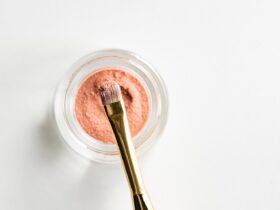Perfume, a carefully crafted blend of fragrant oils, aroma compounds, and fixatives, is a delicate art form. However, the beauty of a perfume can be diminished by a common enemy: oxidation. Oxidation is a chemical reaction that occurs when perfume molecules are exposed to oxygen in the air, leading to a degradation of the scent profile, resulting in undesirable changes in the fragrance’s character. Fortunately, advancements in perfume packaging have given rise to a solution: airless perfume atomizers. These innovative containers are designed to minimize exposure to air, preserving the integrity and extending the lifespan of your cherished fragrances.
Understanding Perfume Oxidation
Perfume oxidation is a complex process involving several factors, primarily the interaction between oxygen and the volatile compounds present in the perfume. Here’s a breakdown of the key elements:
- Chemical Reactions: Oxygen reacts with the aromatic molecules in perfume, particularly aldehydes, alcohols, and terpenes. These reactions can alter the structure of the molecules, leading to the formation of new compounds with different scents.
- Loss of Top Notes: The lighter, more volatile top notes of a perfume are the most susceptible to oxidation. These notes are often the first to fade or disappear completely, altering the initial impression of the fragrance.
- Development of Off-Notes: Oxidation can produce unwanted “off-notes” such as a metallic, sour, or vinegar-like smell. These off-notes can detract from the overall scent and make the perfume less enjoyable.
- Color Changes: Oxidation can also cause a change in the color of the perfume, often resulting in a darker or more yellowed appearance. While this doesn’t always indicate a significant change in scent, it can be a visual sign of degradation.
- Factors Influencing Oxidation Rate: Several factors can accelerate the rate of perfume oxidation, including exposure to sunlight, heat, and air. Repeated opening and closing of a perfume bottle also contributes to increased air exposure.
The Airless Atomizer Solution
Airless atomizers represent a significant advancement in perfume packaging, specifically designed to combat the effects of oxidation. Unlike traditional spray bottles that allow air to enter as the perfume is dispensed, airless atomizers employ a mechanism that prevents air from coming into contact with the remaining fragrance.
How Airless Atomizers Work
The core principle behind airless atomizers is the use of a piston or diaphragm system. When the pump is pressed, the piston or diaphragm rises, creating a vacuum that draws the perfume up through a dip tube and out through the nozzle. The crucial aspect is that as the perfume is dispensed, the base of the container rises or the internal bladder collapses, effectively sealing the remaining fragrance from air exposure. This design creates a barrier between the perfume and the surrounding atmosphere, significantly slowing down the oxidation process.
Benefits of Using Airless Atomizers
- Extended Shelf Life: By minimizing air exposure, airless atomizers help to prolong the shelf life of your perfumes, allowing you to enjoy them for longer without significant changes in scent.
- Preservation of Fragrance Integrity: Airless atomizers help to maintain the original scent profile of the perfume, preventing the loss of top notes and the development of off-notes.
- Improved Hygiene: The airless design also prevents the entry of bacteria and other contaminants into the perfume, further protecting its quality.
- Precise Dosage: Airless atomizers often provide a more consistent and controlled spray compared to traditional spray bottles, ensuring a precise application of the fragrance.
- Reduced Waste: The design allows for almost complete dispensing of the perfume, minimizing product waste.
- Enhanced Aesthetics: Airless atomizers often have a sleek and modern design, adding a touch of elegance to your perfume collection.
Choosing the Right Airless Atomizer
When selecting an airless perfume atomizer, consider the following factors:
- Material: Opt for atomizers made from high-quality materials like glass or durable plastic that are resistant to chemical reactions with the perfume.
- Sealing Mechanism: Ensure the atomizer has a reliable sealing mechanism that effectively prevents air from entering the container.
- Spray Nozzle: Choose an atomizer with a nozzle that produces a fine and even mist.
- Size and Capacity: Select an atomizer with a size and capacity that suits your needs and preferences.
- Brand Reputation: Consider purchasing from reputable brands known for producing high-quality perfume packaging.
Proper Care and Maintenance
To maximize the benefits of airless atomizers and further preserve the quality of your perfumes, follow these guidelines:
- Store in a Cool, Dark Place: Protect your perfumes from direct sunlight and heat, which can accelerate oxidation.
- Avoid Extreme Temperature Fluctuations: Store your perfumes in a stable environment with consistent temperatures.
- Keep the Atomizer Clean: Wipe the atomizer nozzle regularly to remove any residue and prevent clogging.
- Avoid Cross-Contamination: Do not refill an airless atomizer with a different perfume, as this can alter the scent and potentially damage the mechanism.
- Handle with Care: Avoid dropping or mishandling the atomizer, as this can damage the sealing mechanism.
Beyond Airless Atomizers: Other Preservation Techniques
While airless atomizers are a powerful tool for preventing oxidation, there are other techniques you can use to further protect your perfumes:
- Use Dark-Colored Bottles: Dark glass bottles can help to block out harmful UV rays that can contribute to oxidation.
- Store in Original Packaging: The original box and packaging can provide additional protection from light and temperature fluctuations.
- Transfer to Smaller Bottles: If you have a large bottle of perfume that you don’t use frequently, consider transferring a portion to a smaller, airless atomizer to minimize air exposure.
- Consider Refrigeration (with Caution): Some people recommend storing perfumes in the refrigerator, but this should be done with caution, as extreme cold can also affect the scent. Ensure the perfume is tightly sealed and protected from moisture.
Schlussfolgerung
Perfume is an investment, and protecting its quality is essential for enjoying its fragrance to the fullest. Airless perfume atomizers offer a practical and effective solution for preventing oxidation and preserving the integrity of your cherished scents. By understanding the science behind perfume oxidation and utilizing airless atomizers along with proper care and storage techniques, you can ensure that your fragrances remain vibrant and captivating for years to come.
Häufig gestellte Fragen (FAQs)
Are airless atomizers refillable?
Some airless atomizers are designed to be refillable, while others are not. Check the product specifications before purchasing. Refilling requires carefully opening the atomizer (if designed for it) and using a syringe or funnel to avoid introducing air.
How long does perfume typically last in an airless atomizer?
Perfume stored in an airless atomizer can last significantly longer than in a traditional bottle, often for several years, provided it’s also stored in a cool, dark place. The exact lifespan depends on the perfume’s composition and storage conditions.
Can airless atomizers be used for all types of perfumes?
Yes, airless atomizers can be used for most types of perfumes, including eau de parfum, eau de toilette, and eau de cologne. However, it’s always a good idea to check the atomizer’s compatibility with the specific perfume before filling it.
Are airless atomizers expensive?
The price of airless atomizers can vary depending on the brand, material, and size. While some high-end atomizers can be quite expensive, there are also affordable options available that offer excellent protection against oxidation.
How do I clean an airless atomizer?
To clean an airless atomizer, empty any remaining perfume, rinse the internal components with distilled water, and allow them to dry completely before refilling. Avoid using harsh chemicals or abrasive cleaners, as these can damage the atomizer.
















Eine Antwort hinterlassen